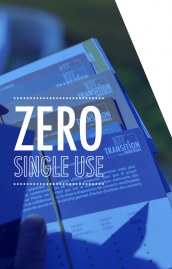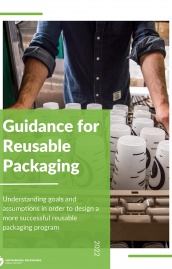Why recycling will not be enough

Recycling is widely seen as the ideal way to tackle the pollution of our packaging. In short, the idea is to put their production in a perfect loop, where materials are reused over and over again and no raw materials need to be extracted. The idea is tempting because it is not challenging our consumption patterns, but the reality falls short.
Choosing to sort your garbage is to favor recycling. And in many cases, recycling is associated with a moral environmental approach. In the new panorama of sustainable development in companies published by IMS (see our article on page 107), waste sorting and recycling are the most important environmental preservation actions, accounting for more than 78% of the total. These actions still concentrate most of the efforts made today. In a traditional economy, which is still mainly linear, the question of what to do with a piece of equipment or a product arises only after it has been used.
Recycling is the direct reintroduction of a waste product into the production cycle from which it came, in total or partial replacement of a new raw material. All other things being equal - that is, in a world without growth or population increase - one kilogram of recycled material would save one kilogram of "new" material. In theory, this system is perfect from the point of view of resource consumption. However, there is a gap between theory and practice because implementation is struggling to keep up with needs, and let's not forget that recycling is not neutral from an environmental point of view, it still requires the consumption energy and water.
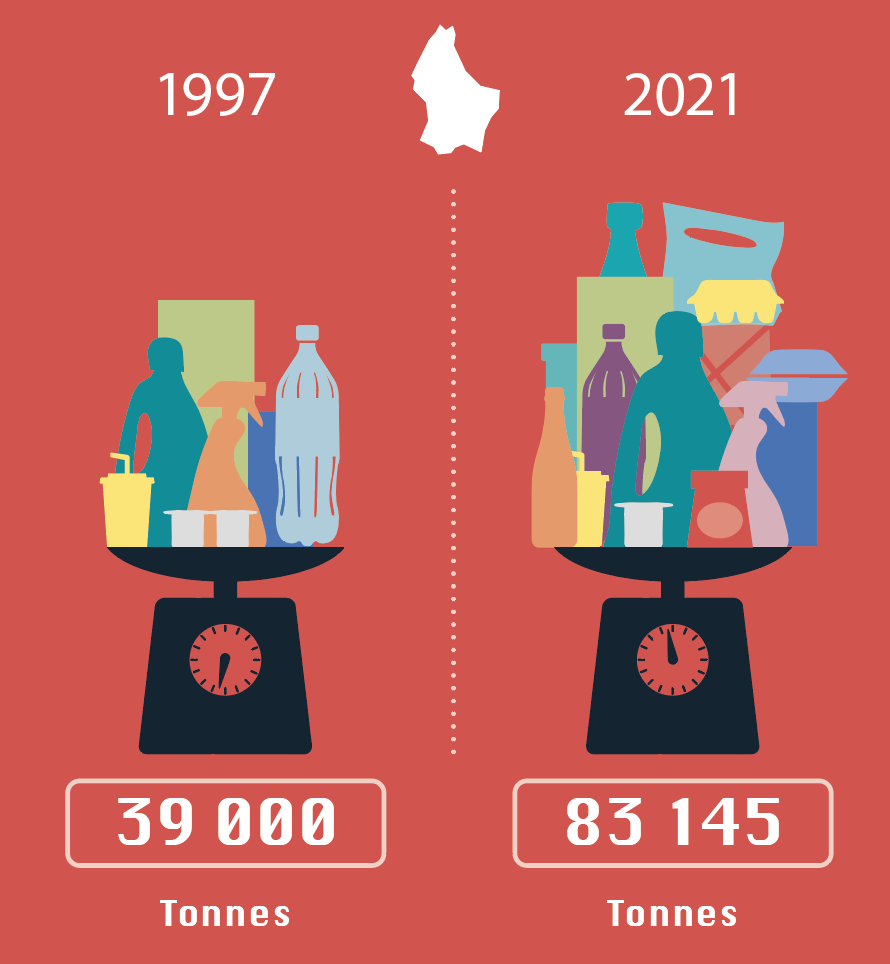
Quantity of packaging placed on the market in Luxembourg.
While sorting performance increased from 66% in 2010 to 71.5% in 2019 in the Grand Duchy, it does not compensate for the ever-increasing and varied quantities of packaging placed on the market. The figures speak for themselves: in less than 30 years, 113% more packaging has been produced, reaching more than 83,000 tons! The massive development of new modes of consumption is put forward as the main explanation: individual packaging, single use and nomadic consumption. So we recycle more and better, but we can't keep up!
A strategy based on packaging recycling alone is a dead end for several reasons. Clearly, it requires an increase in the sorting and recycling capacity of existing facilities. It also requires ever more energy consumption for collection and recycling. And above all, a significant part of packaging today remains non-recyclable and therefore ends up being exported, incinerated or buried.
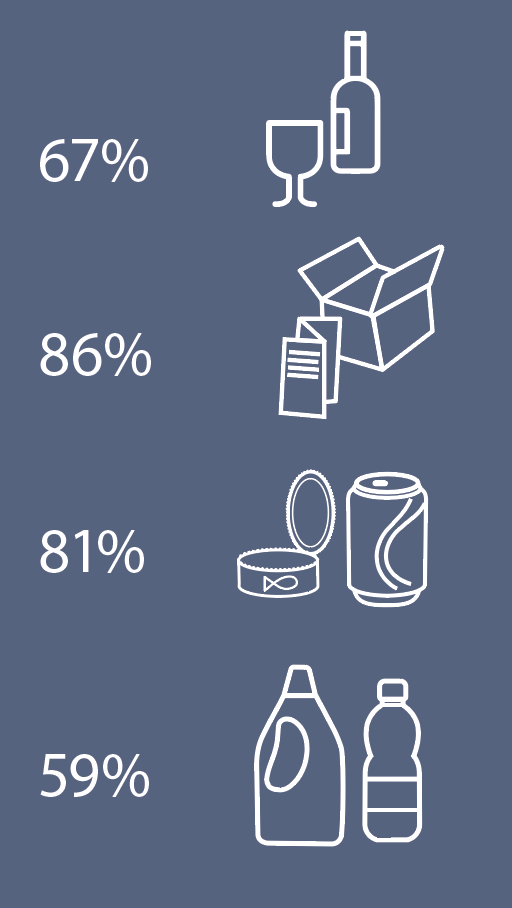
Reycling rate by material. Glass recycling rate 67% Paper / cardboard recycling rate 86% Metal recycling rate 86% Plastic recycling rate 59% Of the 83,145 tons of packaging placed on the market, 59,229 tons were recycled.
Plastic, the material that makes people angry
Not all materials used in packaging cause the same problems. Glass, aluminium and cardboard are fairly well sorted. For example, in Luxembourg, the recycling rate of metal or paper and cardboard exceeds 80%.
For many years now, the concerns have unfortunately been the same: plastics are the poor performers in recycling. As the report "Waste generated and treated in Europe 1990-2001" points out: "A relatively large share of paper and glass packaging generated is collected for recycling. With the exception of Switzerland, when data is available, it shows that the situation is not as good for plastic packaging." The observation is generalized to all EU countries. The following graph illustrates the difficulties thatrecycling this material pose, with a curve of plastic packaging waste generated on the rise and a curve of recycling almost stagnant. The delay is growing.
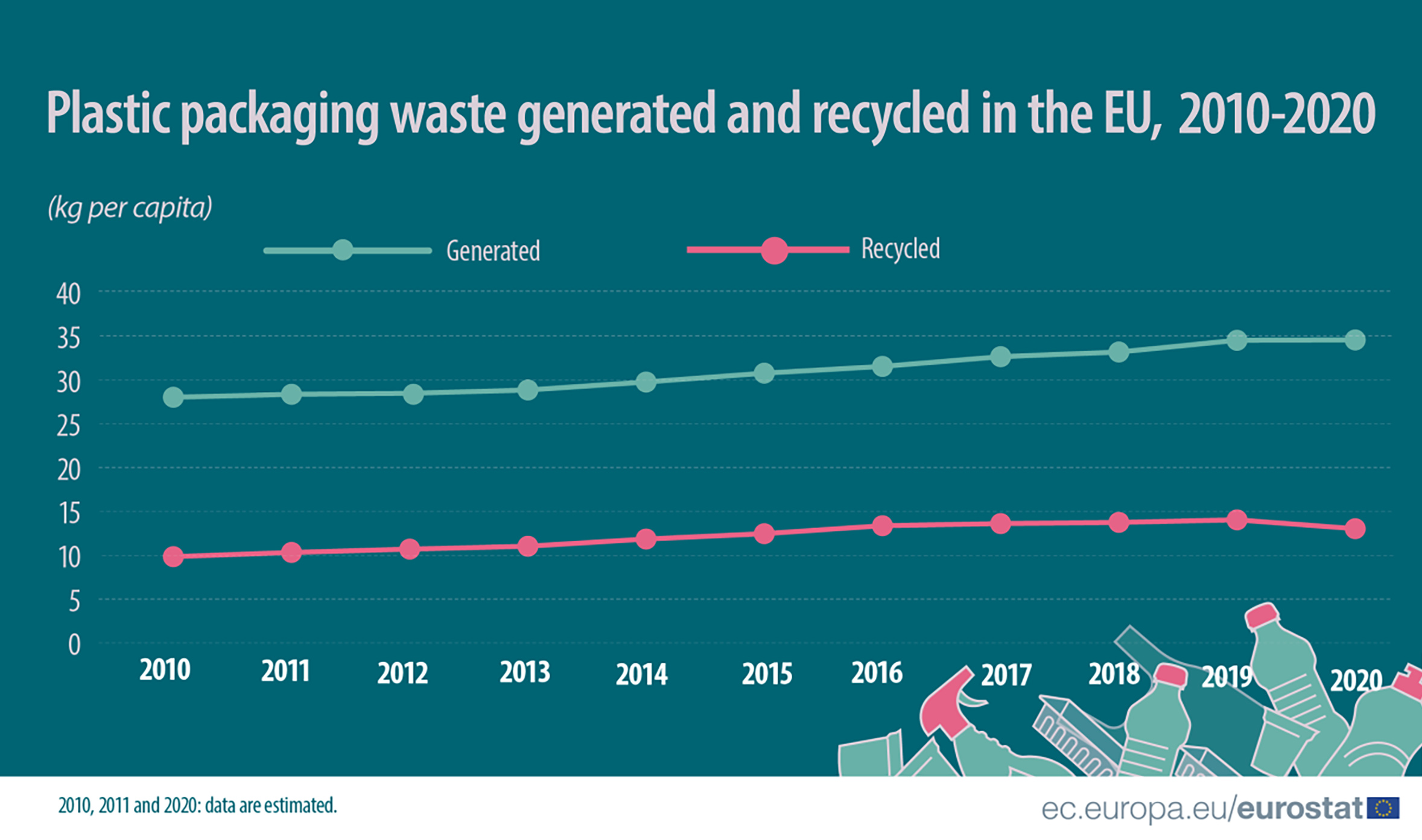
In 2019, each resident of the European Union generated 34.40 tons of plastic waste, of which only 41% was recycled according to Eurostat. The figures at the international level are disrupting the global production of plastic, all uses combined, has increased from 1.5 million tons in 1950 to 359 million tons in 2018. Asia alone accounts for 51% of these numbers, contrasting 16% for Europe. It is therefore no coincidence that this material is currently the focus of much attention.
A mishmash of materials
So why is plastic recycling so low? The explanation is quite simple, plastics remain difficult to recycle because they are complex from the start. Petroleum, a mono-material, which is at the origin of plastics, undergoes many transformations before becoming a plastic. These petrochemical processes, using considerable energy, generate a multitude of plastic sub- materials, called polymers, and the list is long: there are more than 90 of them! For plastic packaging alone, there are seven, often symbolized on products by the Möbius strip - a symbol of recycling, completed by a number.
Plastic bottles are usually made of PET - polyethylene terephthalate, food containers like yoghurt pots are often made of PS - polystyrene.
The real dead end of recycling plastic packaging waste comes from this multiplicity, the golden rule of recycling being: materials and sub-materials do not mix with each other! It is important to know that a recycled plastic material must contain only one polymer to be used again. A recycled plastic bottle, for example, contains only recycled PET.
We can easily imagine the immense challenge facing human society: how to properly sort all these plastics that the average person knows nothing about? It is a difficult task. To answer this question, the European legislator has chosen the path of obligation and prohibition, and each country of the Union has adopted new strategies, such as the "Null Offall Lëtzbuerg" law in the Grand Duchy. These obligations are mainly related to the introduction of a higher proportion of recycled materials in packaging.
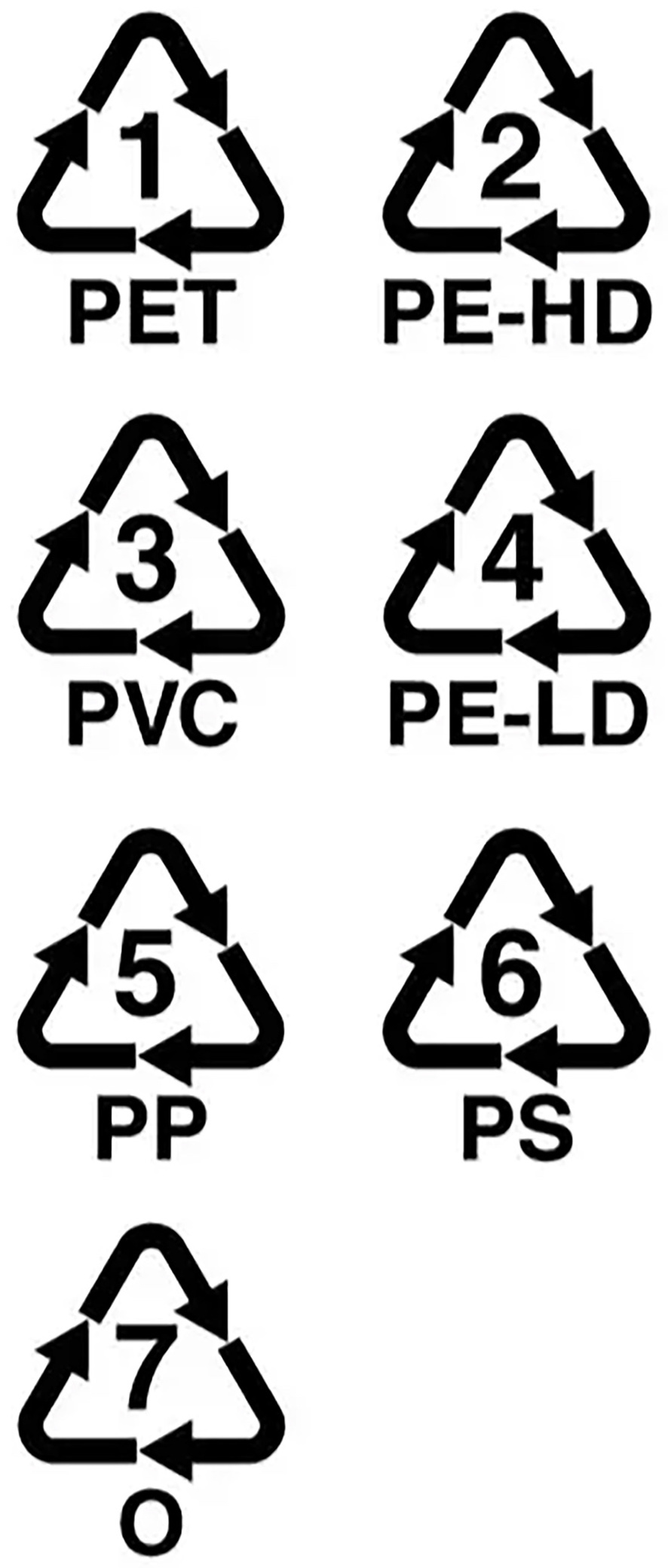
Plastic packaging types.
100% recycled packaging is already a reality for companies at the forefront of environmental issues, such as the German brand Rainett. Furthermore, the recent ban on single-use plastic products often leads to the appearance of substitute materials, especially from renewable sources such as paper and cardboard. It is not uncommon to see fruits and vegetables previously coated with plastic now in a cardboard container.
Even when it can be recycled, waste remains a future consumer of energy and water. Avoiding it remains by far the best approach, and for this the circular economy, understood in its broadest sense, i.e. from the product design stage, opens up new perspectives, in particular by putting prevention back at the heart of our decisions. The deposit, and, more generally, the reuse, can and should (re)take their place. Thinking truly circular can become our daily life, finally!
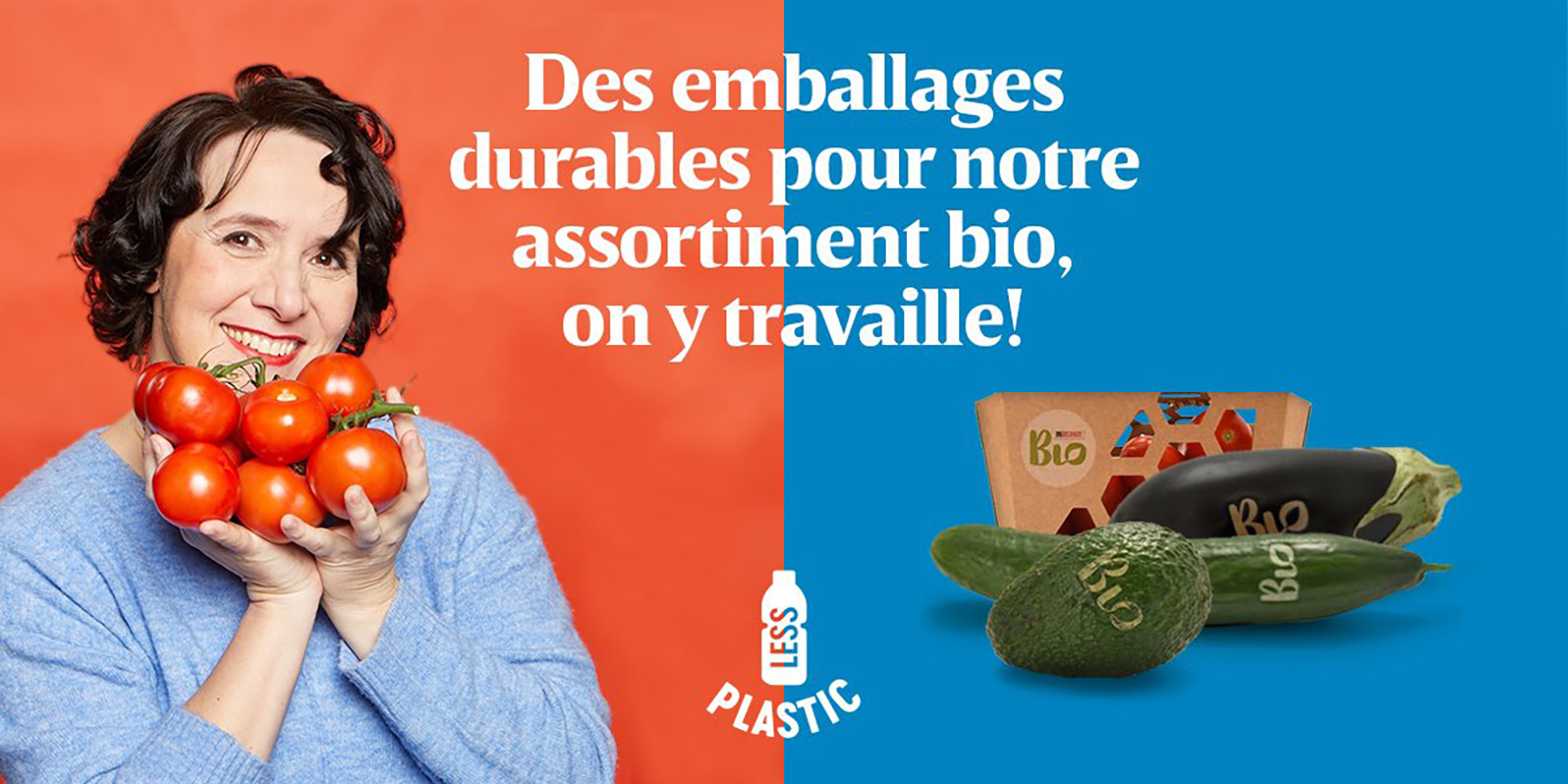
The supermarket retailer Delhaize is committed to reducing packaging in its fruit and vegetable department as much as possible. Cardboard, which is more easily recyclable than plastic, is used where packaging remains necessary.
To be read also in the dossier "The second life of our packaging"
